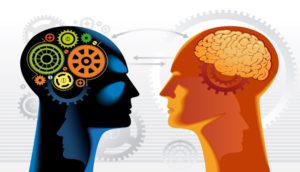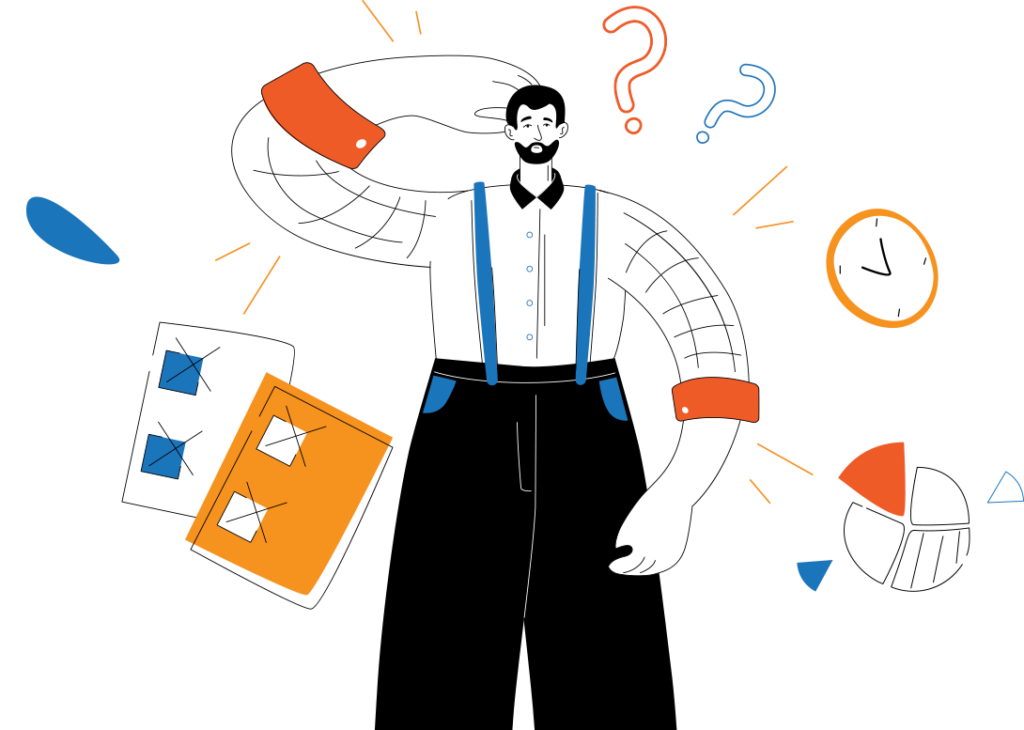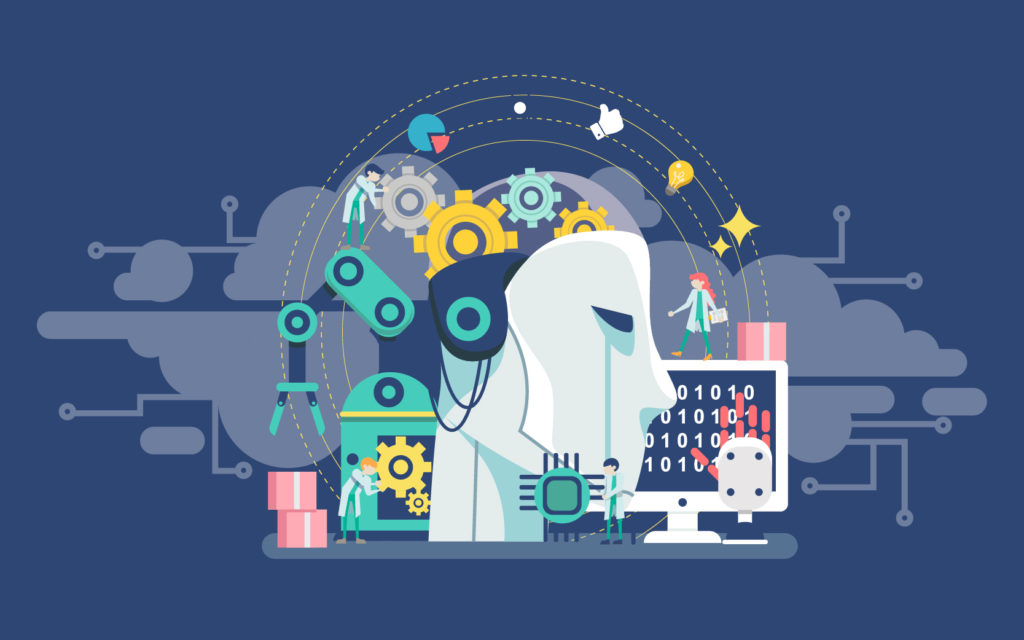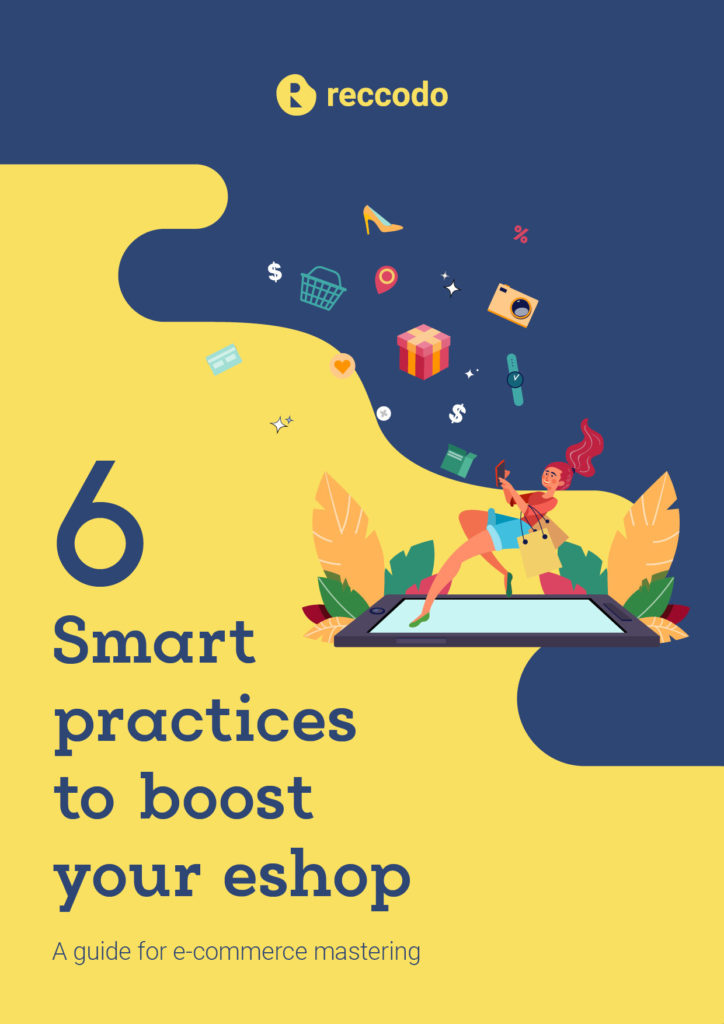Over the past few years, you’ve been hearing terms like ‘Big Data’, ‘Artificial Intelligence (AI)’ / ‘Machine Learning (ML)’, but what do they mean and more importantly… ‘What can these buzz words do for me that I don’t currently do?’

When questions are raised, it’s an opportunity to educate, discuss and show the ‘art of possibility’. There’s an old saying; “you need to learn to walk before you can run”, but there are actually other steps that need to be taken first. Before you can walk you need to learn how to crawl, before you can crawl, you need to learn to get on all fours. I ask you to take the same approach when looking at Big data, AI / ML. Take one step at a time, start from the beginning and before you know it, you’ll be up and running!
By the end of this article you will be able to start visualizing The Art of Possibilities for your projects, your departments, your customers and your organization.
The Art of the Possibility authors Rosamund Stone Zander and Benjamin Zander a book about thinking practices that allow you to move away from “the world of measurement” into “the world of possibility“
Oh, and don’t forget…. Success is being able to combine human intuition with machine learning in order to expand the endless possibility of technology.
What is Big Data?
Big data is defined as “extremely large data sets that may be analyzed computationally to reveal patterns, trends, and associations, especially relating to human behaviour and interactions”. Data can be structured, semi-structured and/or unstructured.
What can data be used for? Organizations have been using data in a variety of ways, methods and purposes. An organization can collect and analyze data to efficiently make decisions for every of its departments based on predicting product trends, forecasting demand, purchasing patterns, optimizing transport routes etc.

This Photo by Unknown Author is licensed under CC BY-SA-NC
What is Artificial Intelligence (AI)?
What is the difference of Artificial Intelligence and Machine Learning? Machine Learning (ML) is a subset of AI and ML is intelligence demonstrated by machines, unlike the natural intelligence displayed by humans and animals.
AI is anysmart program that has the capability of performing tasks that typically require human intelligence. The difference from similar programs in the past is that AI is built to do tasks and learn from each interaction.
An example is that we started on a manual typewriter, then to an electric typewriter, then to word program (like Microsoft Word) and we currently have a program like Grammarly. Grammarly is the only one that continues “learning” the more we use it and you can see the corrections directly even when writing your document.
Using Big Data and AI together
The Art of Possibilities
By using AI and big data, past and current, we can mimic human cognitive functions, such as problem-solving and learn from experience. AI has the capability to quickly show results and patterns in real-time and help organizations make decisions based on hard evidence.
When we discuss the benefits of incorporating AI, we need to address the fact that AI is a technology that must be trained. The software needs to understand what it is looking for, what we expect it to do and as it gathers information it will learn and evolve.
One example is what Reccodo does with its partners’ e-shops. We “follow” visitor’s as they browse through the e-shop. The software is gathering data from visitors’ “clicks” and in a short time, the software is able to understand a customer’s behavior. Once that training/learning period is finished, the tool had insights and is be able to recommend products personalized to that specific visitor, in real-time.
Humans and Technology
Any company can gather data from customers or vendors nowadays but not every company knows how to utilize them. Technology helps with analysis and visualization, but humans need to determine what the results actually mean for their business, what decisions can be made based on them.
Humans assisting machines. Humans need to perform three crucial roles. First is training the machines to perform certain tasks. Next is to explain the outcomes. Finally, is to sustain the responsible use of machines.
Smart machines are helping us expand our abilities in three ways. Machines can amplify our cognitive strengths. They can interact with customers and employees to free us from higher-level tasks. Let us not forget embodying human skills to extend our physical capabilities.
What does AI/ML mean for you?
The data we gather might not be 100% accurate or ‘clean’. In the past, my team and I have spent a lot of time reviewing data before we could take any action. Instead of spending countless hours reviewing data, we can introduce AI / ML algorithms to ‘clean’ the data and prepare it for us. This is where humans and AI work well together. The humans always receive and input new data, while AI “cleans” them and keeps the useful ones.
Utilizing the power of AI/ ML together, you can be assured there is real time accurate information on any query. Looking at what has happened in 2020 we can see how AI / ML was used to act quickly and how humans were critical in adjusting purchasing trends. The technology raised red flags on in-store sales going down and online raising. The individuals (us) were able to filter out the in-store sales dropping and capture online visitors/customers.
A real-life example
With AI and experts in the organization, companies can figure out how to use the data and what action must be taken asap. Using technology, organizations would be able to filter through data faster, offer options, what is missing to make the decision reality.
A customer example that we have come across:
When the retailer (in this case a grocery store) offers delivery and changes to a curb pickup or curb delivery what would this mean for each department? This affects the front end (website) to the back end (Operations). At this time, you need to update the website, assess and redistribute or make additional hires to compensate for changes in demand. You may need to adjust the process from online order, to packing slip, to warehouse for picking, to accounting….etc.
How AI can help you with these changes? Here are some items that were tackled:
Employees
Employees, who can be relocated to warehouse /distribution – if large organization you will need a quick way to assess skill set
Logistics
Due to an increase in deliveries – AI can assist you in determining the following:
- What is needed by location
- Option for delivery, extend your fleet, outsource, extend delivery times, offer incentives for store pick up…
- Warehousing
Website Update
- How to provide the same experience in an online grocery store. Instead of walking the aisles, you have a product recommendation, a smart search, and finally bundles to help with up-sale / cross-sale
Keep the customer coming back. It is no longer who is closest to me -it is not what is offered by each store.
A reminder that technology can process information at a much higher speed than we do, and it can also multitask successfully. While dealing with adapting to current issues, at the same time the technology is able to identify possible opportunities.

This Photo by Unknown Author is licensed under CC BY-SA-NC
My own insights
What I find true is a statement many of us have heard before – “what was old is new again’. Finding myself more than half of my life working in different industries, a variety of roles under my belt, I find myself revisiting some projects and strategies that were dismissed in the past.With the capability of technology today, strategies, opportunities, projects, goals / visions are attainable today.
I have been fortunate to have worked for over 11 years in a large global technology company and seeing not only how technology has evolved but how we use it, challenge ourselves and our industries. How we can make a difference from within, with our peers, with our customers and our environment. This cannot be done alone but we now have the technology to start with ‘the Art of Possibilities’.

This Photo by Unknown Author is licensed under CC BY-SA-NC
References
https://ec.europa.eu/digital-single-market/en/what-big-data-can-do-you
https://www.channele2e.com/business/digital-transformation/big-data-ai-work-together/
https://nearshoreamericas.com/small-data/
https://www.britannica.com/technology/artificial-intelligence
https://enterprisersproject.com/article/2019/10/how-big-data-and-ai-work-together
Is your eCommerce set up for Growth?
Answer the key questions and find out ideas that will skyrocket your customer experience!


